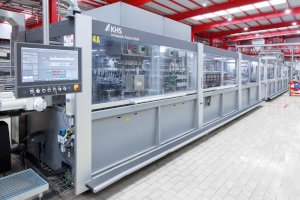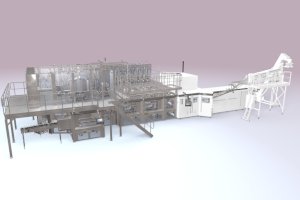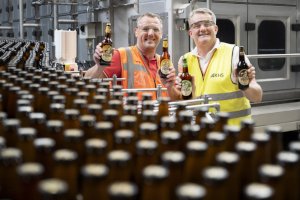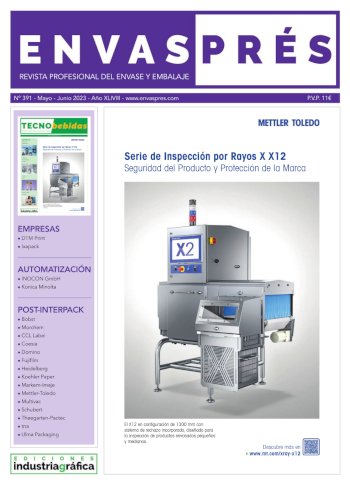KHS show the flexible, resource-saving beer stabilization Innopro ECOSTAB
- Publicado el 10 de Diciembre de 2018
In 1878 Lorenz A. Enzinger, heralded by the trade as the “Einstein of beer”, registered the first filter machine with the Imperial Patent Office. His innovative filter technology has had a lasting impact on the brewing industry. As the successor company to L.A. Enzinger KHS looks back on 150 years of experience in the filtration and stabilization of beer. Today’s beer stabilization systems in the ECOSTAB machine series are state of the art.
In view of the increase in the number of exports beer stabilization is now also an important factor for medium-sized breweries. This is the only way they can ensure a long product shelf life which is essential on long transportation distances. Nowadays beer is usually stabilized by reducing either the number of proteins or tannins in the product. If the brewer filters a sufficient quantity of one of these substances out of the beer, the hazing is delayed. Using stabilizing agent polyvinylpolypyrrolidone (PVPP) in particular has major benefits as it is regenerative and can thus be utilized several times.
KHS is setting standards in regenerative beer stabilization with PVPP with its ECOSTAB B technology. The system is based on the tried-and-tested KHS ClearLine frame design. All of the relevant components, such as pumps, control cabinet and stabilizing columns, are on one rack, with only the PVPP storage vessel in a separate unit. The modular design permits a flexible layout, with the low total system weight suitable for platform installation.

The ECOSTAB B has an output of 75 to 240 hectoliters of beer per hour. Thanks to its modular design the performance or capacity can later be extended at any time. The machinery is also distinguished by its low cost of investment. Furthermore, compared to standard systems the ECOSTAB B consumes up to 70% less PVPP. The high flux of up to 45 hectoliters per square meter through the filter strainers results in a very small system volume which in turn yields further benefits as regards water and concentrate savings, reduced blending amounts and setup times. The technological values demanded by the market, such as an oxygen pickup of under 10 ppb and PVPP losses of below 0.5%, are easily achieved with the ECOSTAB B.
During production the system doses the pre-defined, recipe-controlled quantity of PVPP proportionally into the beer flow. The PVPP is deposited on the inside of the filter elements; the beer flows through these, is stabilized and fed to the downstream machine. Following production the PVPP is extracted and fed to the storage vessel and the filter elements are cleaned by rotating spray heads. Blockages on the filter surfaces are therefore practically eliminated.
Like the ECOSTAB B the continuous ECOSTAB C variant is also based on the tried-and-tested KHS ClearLine frame design. Three stabilizing modules form the heart of the system, with two always in production and one in regeneration mode. With a capacity range of 150 to 600 hectoliters per hour in continuous stabilization operation the ECOSTAB C series meets all market requirements.
During regenerative stabilization with PVPP the beer is stabilized in a system installed downstream of the clarifying filtration apparatus. This construction prevents the PVPP from collecting in the precoat filter vessel as a further solid – as is the case in non-regenerative stabilization – for the vessel can only absorb a certain amount of solids. In the regenerative variant it is thus not necessary to temporarily halt filtration once this maximum has been reached.
As less filter media has to be disposed of, the cost of using regenerative PVPP is also much lower than for setups which apply non-regenerative PVPP. In addition, the service life of the diatomaceous earth filter is significantly lengthened, with a return on investment of well under two years not unusual.



























